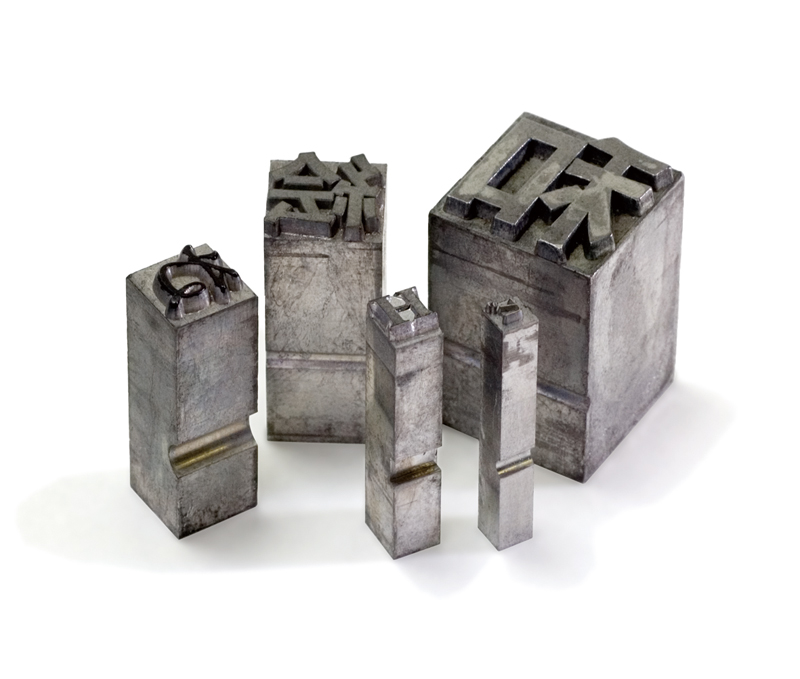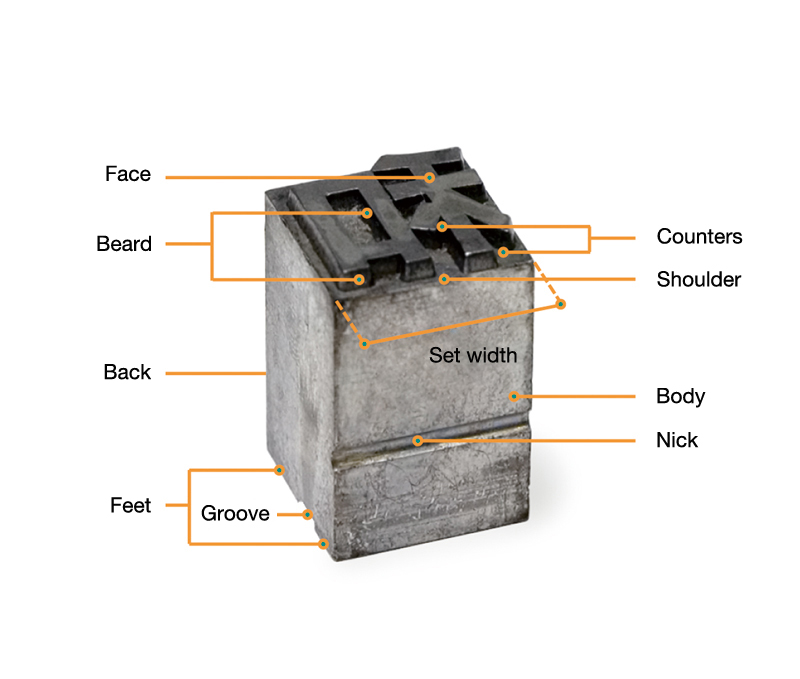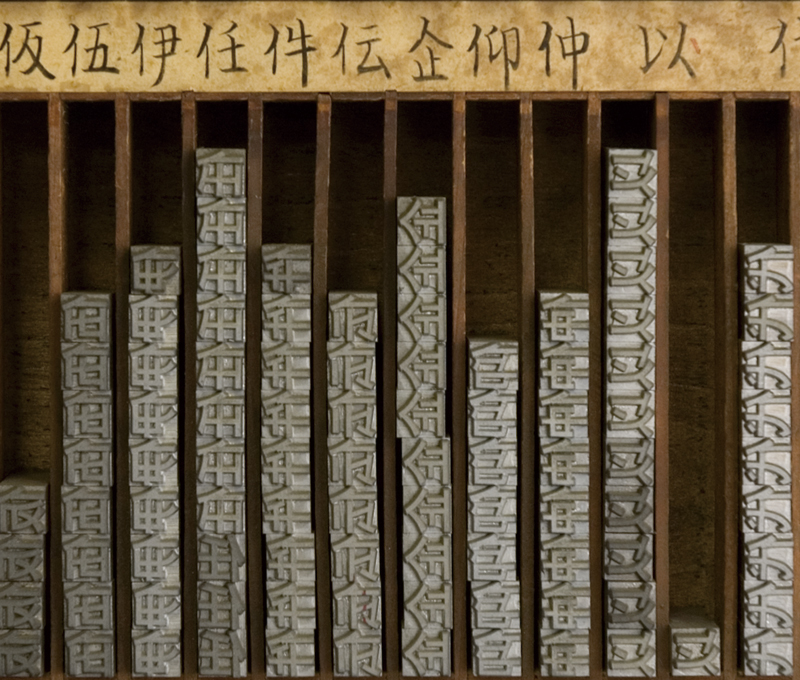Metal Type
金属活字
Kinzokukatsuji
CATEGORIES
Metal type is usually cast in an alloy mainly made of lead. It is a piece of metal shaped into a rectangular prism with a top surface which is the size of the letter and a height of around 24mm, and is used in a combination to produce a type page for movable type printing.
The face of a type is carved to produce a raised letter. The type is lined up, loaded with ink and pressed against paper to print. This technique, known as movable type printing, in which text and groups of letters are printed using type, was invented and put to practical use by Johannes Gutenberg in 1445. This soon became the mainstream printing method because once metal type is made, it can be used repeatedly for printing. In later periods, however, due to issues relating to the storage of type and the laborious work of selecting and mounting them, letterpress printing was succeeded by the phototypesetting technique which was more efficient and offered a higher degree of freedom. Letterpress printing requires all the characters to be prepared in each size, so a vast amount of type is used. With Western languages, the text can be set using the letters of the alphabet and a few types of punctuation marks and symbols (such as brackets and the period). With Japanese, however, type is required not only for kana characters but for a huge array of Chinese characters, and the task of producing and managing this type was extremely arduous. Today, printed materials are usually produced by creating typesetting on the computer and are rarely produced using type.
With early examples of metal type, because Western alphabet has a relatively simple shape compared to Chinese characters, type was generally made by firstly carving out a raised letter directly on a block of hard metal such as iron to create a patrix. This was then driven into a plate of softer metal such as copper to leave behind an impression of the letter and create a matrix (called punch matrix). Heated metal alloy was then poured into this mold to produce type. The letters were initially carved by craftsmen but machines were used from the 19th century onwards to carve them automatically. In Japan, Shozo Motogi of Nagasaki was introduced to the wax-mold electrotype technique by an American named William Gamble in the 2nd year of the Meiji era (1869) and succeeded in making Japanese type. In this technique, the original character is carved on a block of boxwood which is then coated with copper using electrolysis to produce the matrix. This method was suitable for making type for Chinese characters which have many strokes.
RELATED PAGES

 The parts of a metal type
The parts of a metal type
 Sudare case (a case for holding metal types)
Sudare case (a case for holding metal types) The parts of a sudare case (close-up)
The parts of a sudare case (close-up)
